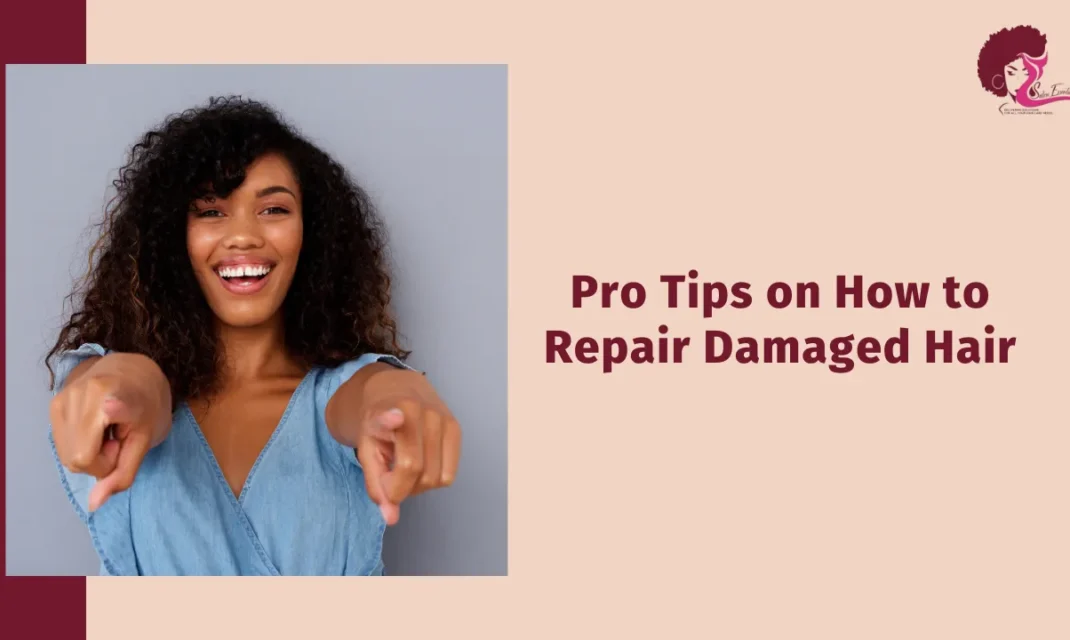Does your hair feel dry, brittle, or frizzy? Have you noticed more breakage and split ends? If yes, your hair is damaged.
Hair damage happens when the outer layer (cuticle) weakens. This leads to moisture loss, breakage, and dullness. So, repairing damaged hair is important to restore strength, shine, and health.
So, how to repair damaged hair? Simply put, to repair damaged hair, —
- avoid heat,
- harsh chemicals,
- and over-washing.
Use deep conditioning and protein treatments, and trim split ends regularly.
Let’s get into the details of this topic.
Key Takeaways:
|
Understanding Hair Damage
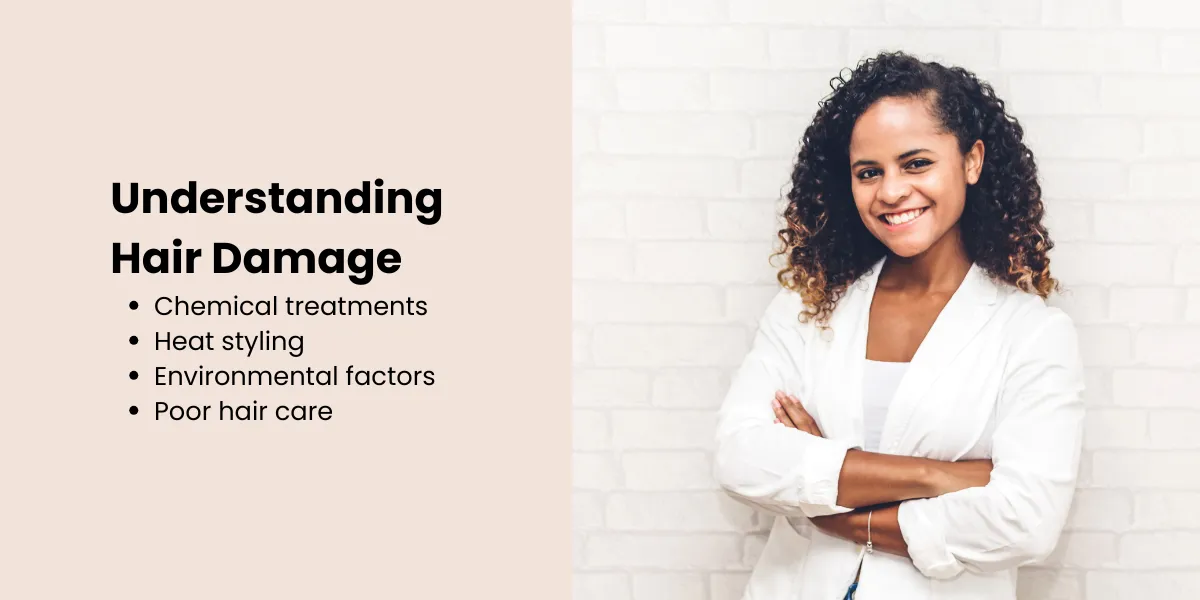
First, we’ll know what causes hair damage.
Hair damage can happen due to:
- Chemical treatments – Dyeing, bleaching, perms, relaxers
- Heat styling – Frequent use of straighteners, curling irons, blow dryers
- Environmental factors – Sun exposure, pollution, hard water
- Poor hair care – Harsh shampoos, lack of moisture, rough brushing
A study of damaged hair by Vivian Robinson, a leading expert on hair health, published in 1976 in the Journal of the Society of Cosmetic Chemists, is a seminal work in the field of hair care research.
In this study, Robinson found that everyday things like brushing and shampooing can cause significant damage to the hair shaft, particularly in cosmetically treated hair.
Signs of Damaged Hair
So, how to tell if your hair is damaged?
Damaged hair is easy to spot. It looks dull and rough instead of shiny and smooth. Frizz makes it puffy and hard to control. You may notice short, broken strands from breakage.
Tangles and knots happen more often because the hair is weak. Also, split ends make the tips of the hair look dry and frayed.
How to Repair Damaged Hair: Fixing the Damage Based on the Cause
Before fixing hair damage, we first need to check how damaged your hair is.
Researchers at Marico R&D Center in Mumbai performed hair damage assessment by testing hair thickness, protein loss, and strength.
They found that damaged hair becomes thinner, loses more protein when washed, and breaks more easily. Their study also showed that using conditioners and oils can help repair hair by reducing damage, making it smoother, and strengthening it.
Now, let’s check out how you can fix different types of hair damage the right way.
Hair Damage from Dye
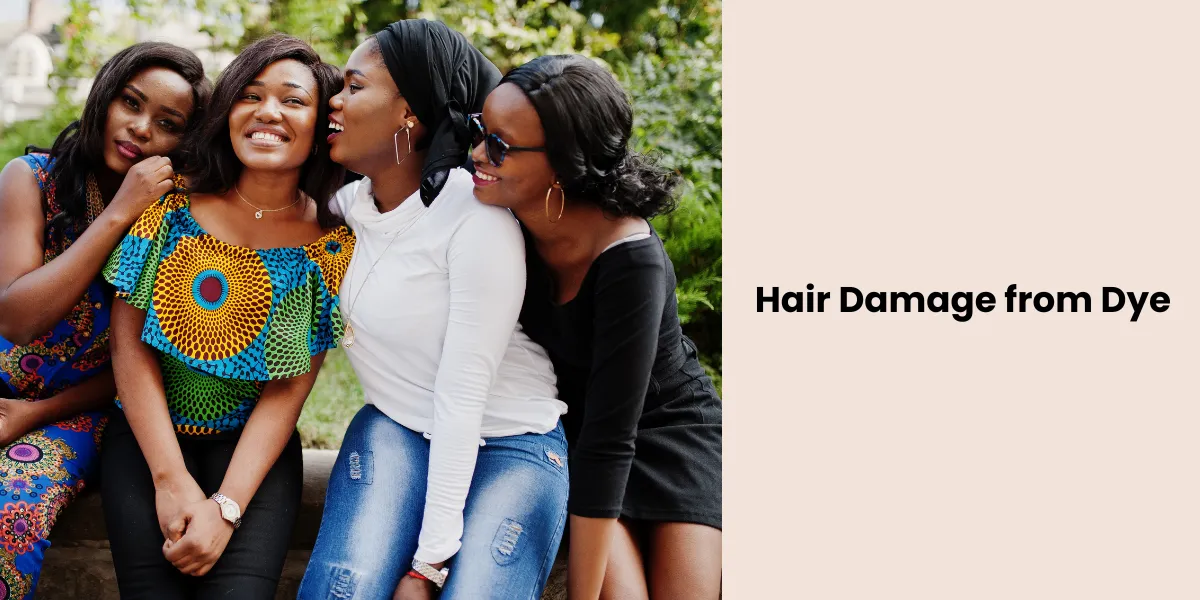
Hair dye, especially ammonia-based ones, can dry out your hair. To limit further damage, use sulfate-free shampoos to keep moisture locked in. Try to space out dye sessions and avoid frequent coloring.
Deep condition your hair at least once a week to keep it soft. To repair the damage, use protein treatments to strengthen weak strands.
Hair Damage from Bleach
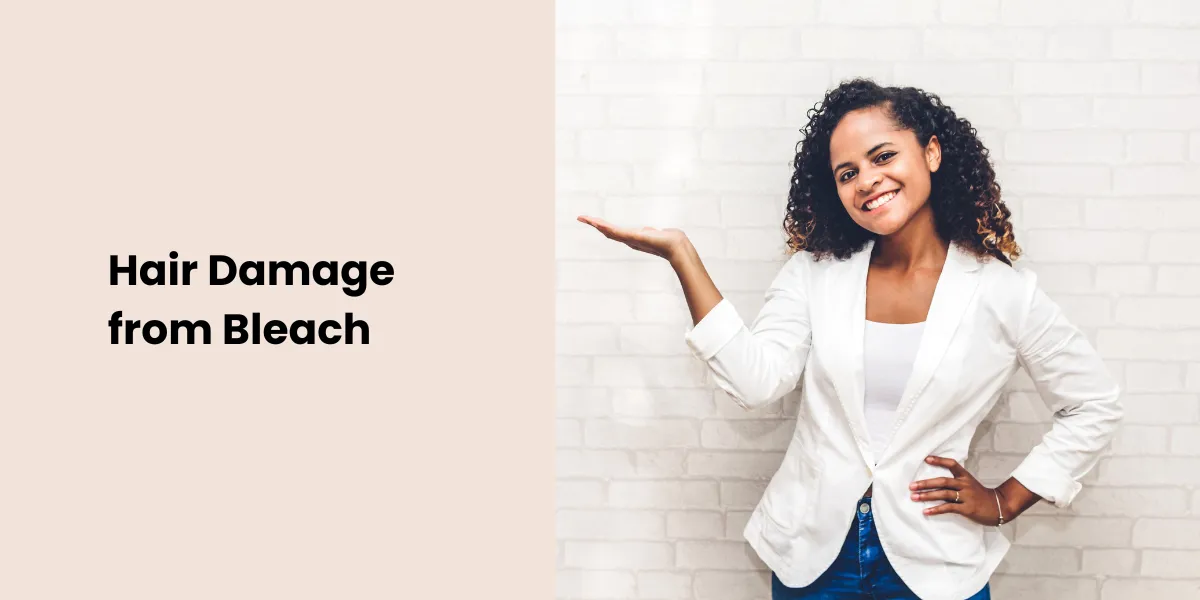
Bleaching strips your hair of natural color and proteins, making it weak. Avoid re-bleaching already damaged hair to prevent breakage. Use purple shampoo to keep brassiness away and maintain a healthy tone.
To repair the damage, apply keratin treatments to bring back protein and strength. Hydrating hair masks twice a week will help restore softness and shine.
Hair Damage from Heat Tools
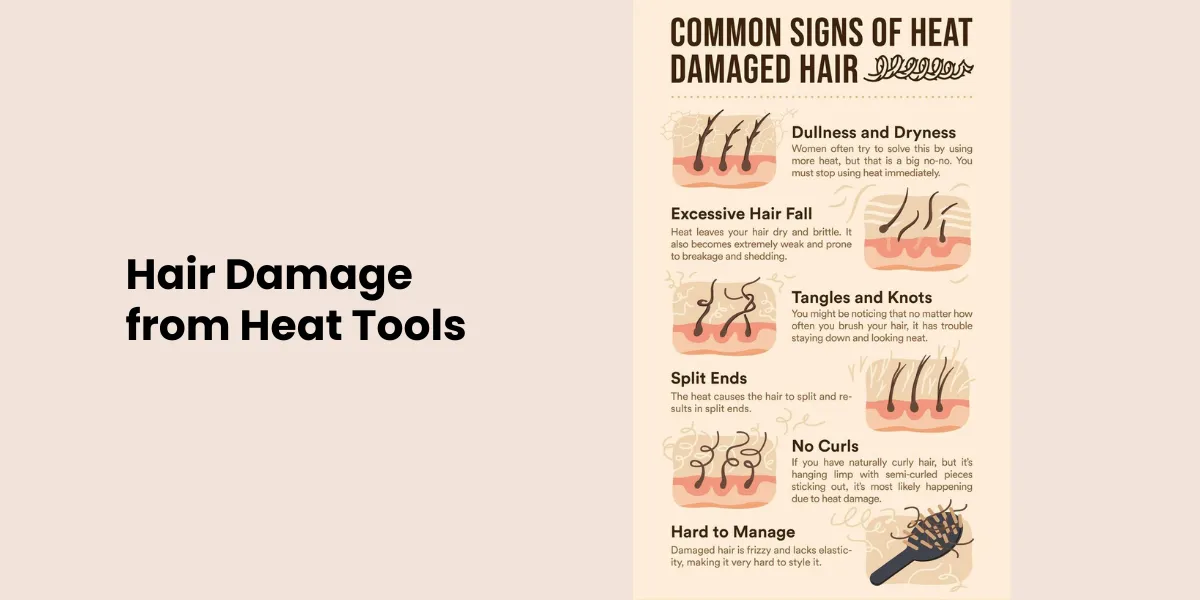
Frequent use of heat tools like straighteners and curling irons weakens hair over time. Keep your heat settings below 350°F (180°C) to prevent burning your strands.
Always use a heat-protectant spray before styling. To repair heat-damaged hair, avoid daily heat styling and give your hair time to recover. Deep conditioning regularly will add moisture and prevent further dryness.
Hair Damage from Neglect (Skipping Salon Visits)

Skipping trims and ignoring hair care routines can lead to split ends and dryness. Get a trim every 6-8 weeks to keep hair healthy and prevent breakage.
Follow a proper hair care routine with gentle washing and regular conditioning. To repair damage from neglect, use hydrating masks to bring back lost moisture. Switching to moisture-rich shampoos and conditioners can also make a big difference.
If You’re Not Sure What Caused the Damage
If you’re not sure what caused your hair damage, don’t worry. Here’s what you can do for different types of hair issues:
Tangles & Knots
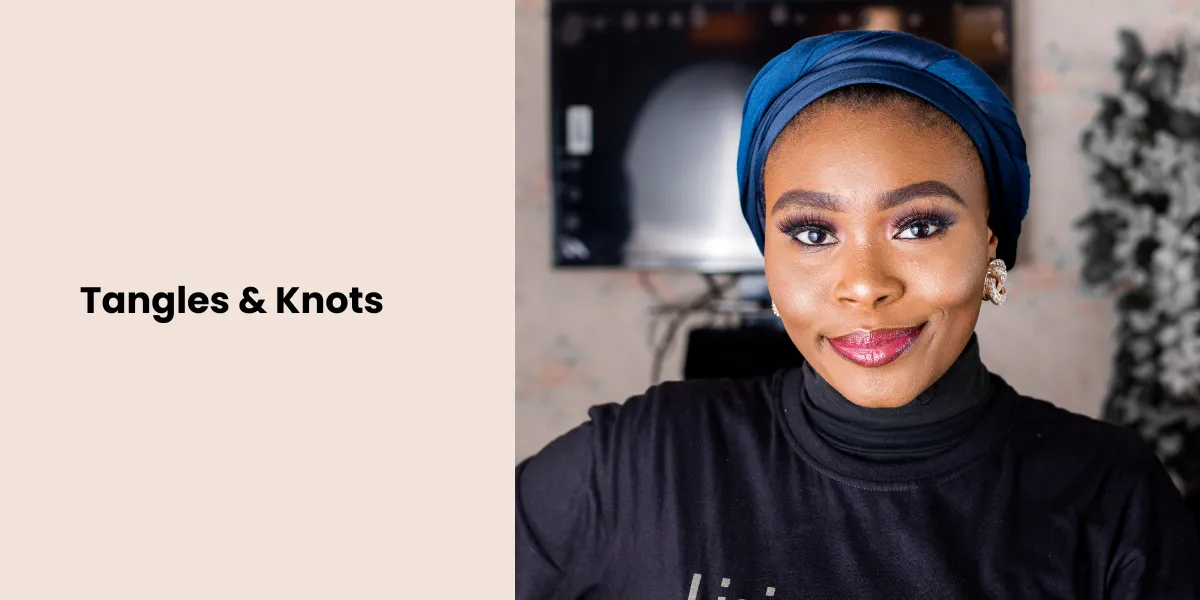
To stop your hair from getting worse, try using a detangling spray. This helps to loosen the knots gently. Avoid brushing your hair when it’s wet because that can break it.
To fix the damage, use a wide-tooth comb. It’s gentler on your hair. You should also try deep conditioning treatments to restore moisture and smoothness.
Dull and Dry Hair
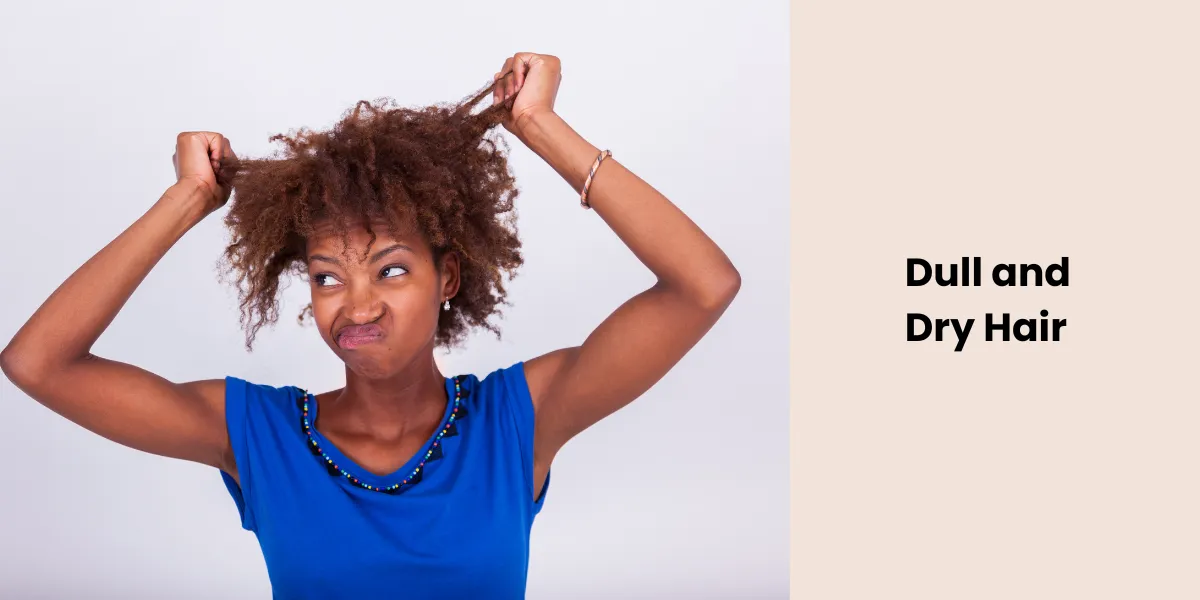
To prevent more damage, use products that lock in moisture. Stay away from hair products that contain alcohol, as they can dry out your hair. To help fix dry hair, you can make DIY hydration masks at home.
To repair these kinds of damaged hair naturally, use natural oils like coconut oil or argan oil, which work wonders to bring back shine and softness.
Fried and Frizzy Hair
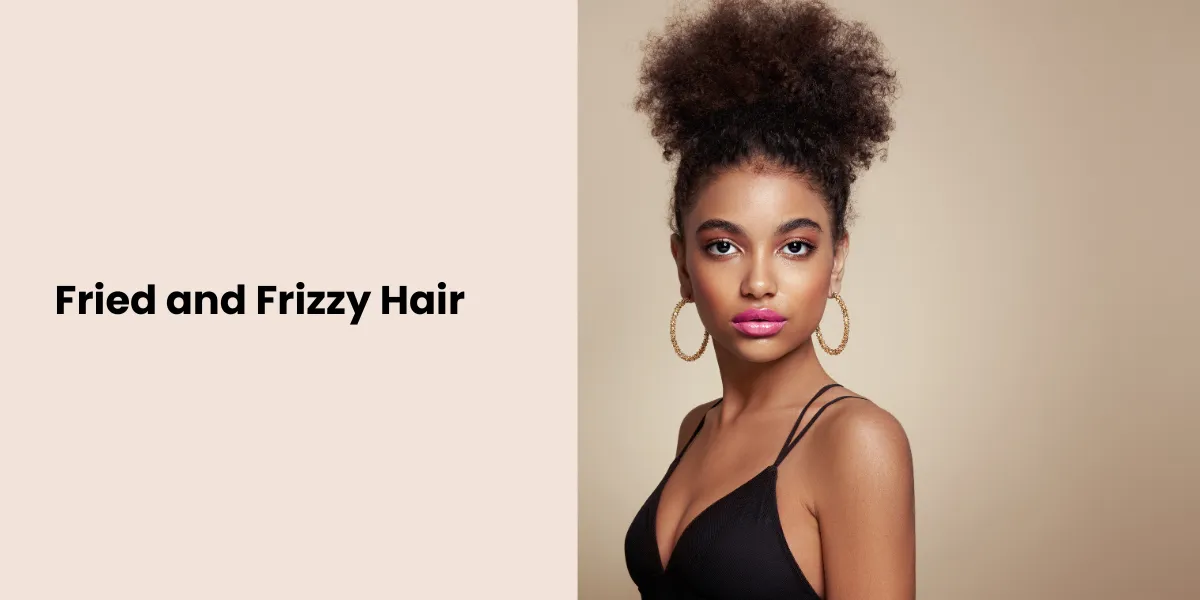
To avoid further damage, stop using harsh styling products. These can make frizz worse. Also, sleep on a silk pillowcase. It’s much gentler on your hair.
To repair fried hair, deep condition it twice a week. You can also use a leave-in serum to keep your hair smooth and hydrated all day long. Plus, to repair frizzy hair, use moisturizing products, deep condition regularly, and apply natural oils to keep it smooth and hydrated.
Brittle and Breaking Hair
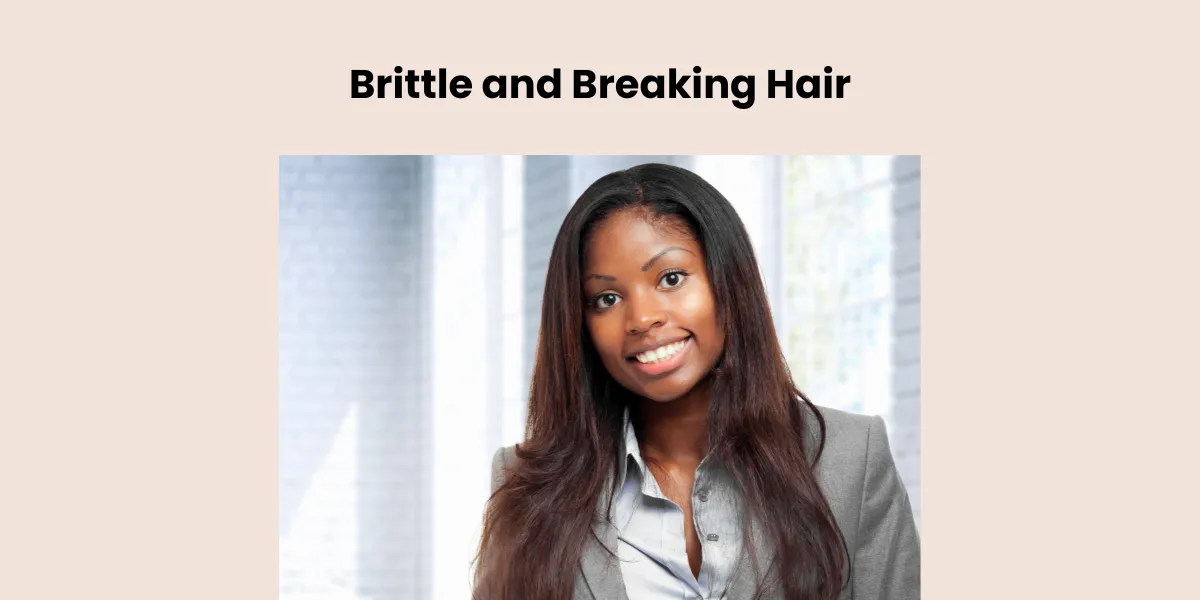
To stop your hair from breaking more, avoid tight hairstyles. They can cause stress on your hair. Don’t brush too roughly, as this can cause even more breakage.
To fix brittle hair, use protein treatments to strengthen it. Also, trim your split ends regularly to keep your hair healthy.
Also, to repair hair breakage, focus on using protein treatments, moisturizing products, and avoiding harsh styling techniques.
10 Ways to Repair, Treat & Fix Damaged Hair
Before starting, let’s talk about Cynthia Cobb, who is a licensed nurse practitioner and skincare expert who shares tips on hair and skin health. She explains that hair damage, like dryness, breakage, and split ends, happens due to too much styling, heat tools, and chemical treatments.
To keep hair healthy, she suggests using moisturizing products, avoiding too much heat, and getting regular trims.
Here are the top ten ways to repair, treat, and fix damaged hair.
- Lower the Temperature on Heat Tools – Always use a heat protectant.
- Handle Wet Hair with Care – Use a microfiber towel instead of rubbing with a regular towel.
- Indulge in Rich Hair Masks – Apply once a week for hydration.
- Embrace Leave-Ins – Helps with detangling and UV protection.
- Get Professional Treatments – At Salon Essentials LA, we offer professional hair treatment for damaged hair to help repair, treat, and fix your damaged hair with expert care.
- Let’s Bond – Use bond-repairing products to rebuild hair structure.
- Trim Your Split Ends – Every 6-8 weeks to prevent breakage.
- Swim and Sun with Care – Rinse hair after swimming and use UV protection.
- Don’t Let Your Hair Get Thirsty – Use hair oils or hydrating sprays.
- Shampoo Wisely and Well – Pick a shampoo that suits your hair type.
If you want to know about the best shampoos and conditioners for curly, growth, dry, or oily hair, check out these insightful blogs now!
Advanced Hair Repair Methods
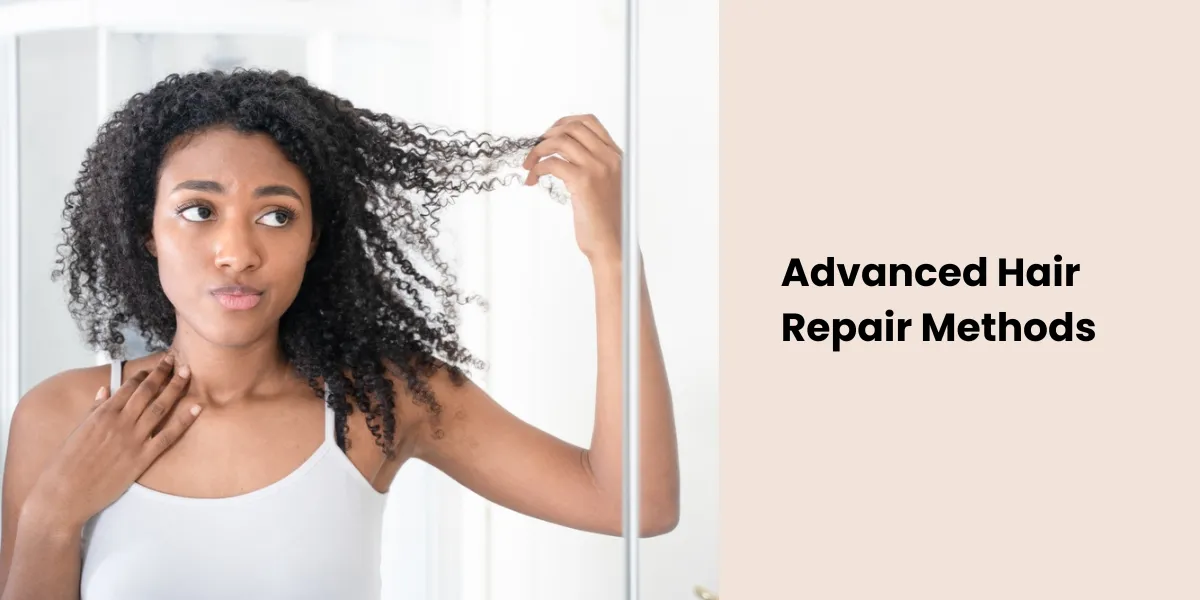
Bond repair treatments are great for strengthening the inside of your hair. They work to rebuild and protect each strand from the inside out. Keratin treatments help smooth out damaged hair and rebuild it, giving it that healthy shine again.
Scalp care and hair growth boosters can make your hair stronger and healthier from the roots up.
What to Avoid in Hair Care Products
There are a few dangerous ingredients in hair care products that you should avoid diligently.
- Sulfates can strip your hair of its natural oils, leaving it dry.
- Parabens can cause irritation on your scalp, which you definitely want to avoid.
- Silicones can build up on your hair over time, making it look dull and lifeless.
Wrapping Up
So, coming to this point, we can hope that you now have a pretty good idea of how to repair damaged hair. Hair damage is common, but with the right care, you can restore its health.
Follow a hydration, repair, and protection routine to prevent further damage. Trim split ends, use bond-building treatments, and avoid harmful chemicals.
With patience and consistency, your hair can regain its strength, shine, and smoothness.
Check out this insightful blog to learn all about the best shampoo and conditioner for damaged hair.
FAQs
|

